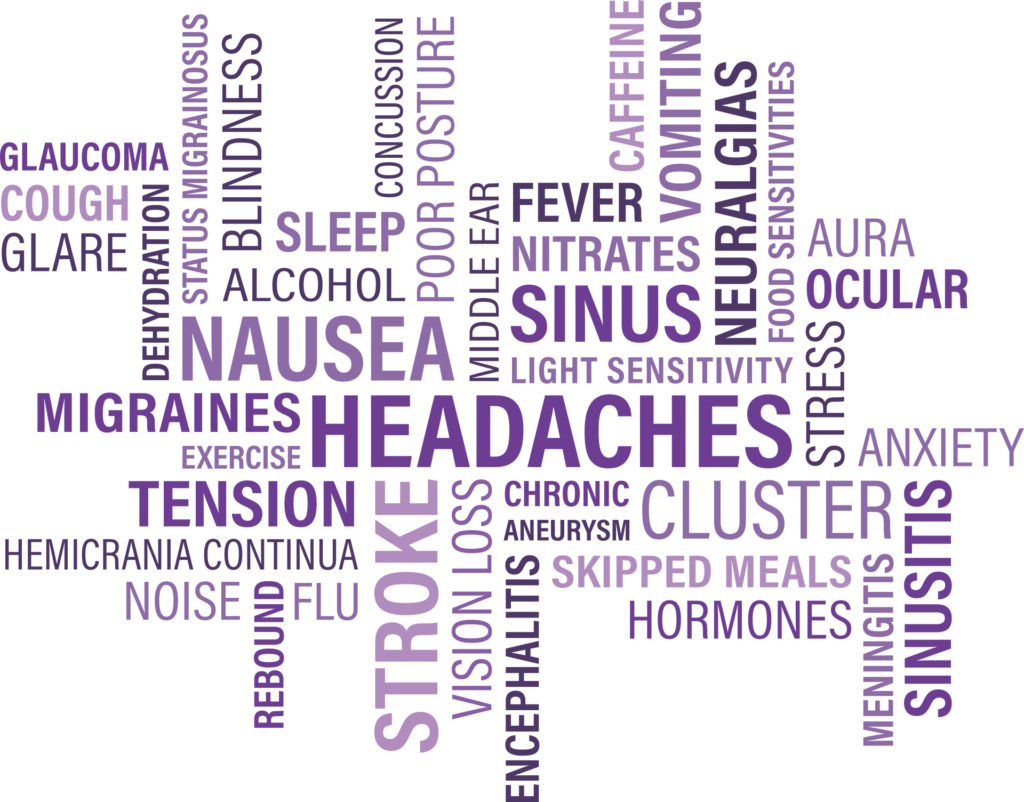Headaches affect 80 percent of the population at least once in their lifetime.
Migraine is one of the most common primary headaches. Its prevalence is about 18 percent in women and 6 percent in men. Most of the sufferers will have their first attack in their teens. By 40, 90 percent of those with migraine have had their first attack.
Migraine is a severe throbbing (also called pulsatile) headache, generally involving one side of the head (may involve both sides) which may last anywhere from 4 hours to 3 days. Migrainous headache lasting more than 3 days is a medical emergency and warrants hospital admission. It mostly worsens with routine levels of physical exertion and is commonly associated with nausea, vomiting and sensitivity to light and sound. That is why most patients prefer to lie down still in a dark quiet room. Surprisingly, there is a vast variability in the intensity and disability from person to person and attack to attack.
Some people may experience premonitory symptoms minutes to hours before the headache such as mood swings, excessive yawning, thirst, or food cravings. People paying attention to such warning signs get to know that they are about to have a headache and are mostly able to avoid the upcoming attack by taking a timely pill.
Some people may also have an aura just before or during the headache such as blazing flashes of light, zig zag lines or even transitory loss of vision. It may also include tingling and numbness of limbs and face. Such aura attacks require the same treatment and do not mean that the headache is more complicated or severe. In fact, some patients just have aura and no real headache after that!
As far as the cause of migraine is concerned, many theories have been proposed. The most accepted one proposes that it is due to disturbances in blood circulation which in turn are due to neural dysfunction in the brain.
Some of the common triggers of Migrainous headache are –
- Emotional stress
- Extreme physical exertion
- Hunger
- Sleep deprivation
- Dehydration
- Heavy fatty meals
- Red wine
- Certain types of cheese
- Dark chocolate
- Excessive caffiene intake
- Pungent odours such as car perfumes etc
- Loud noises
- Bright flashing lights
Migraine is strongly associated with hormonal changes, and hence more prevalent in women. The ever changing hormonal environment throughout a woman’s life cycle, including menarche, menstruation, oral contraceptive use, pregnancy, menopause, and hormonal replacement therapy, has a profound effect on the course of migraine. Around 7 percent of women may have an attack anytime from 2 days before menses till 3 days into the menses. It is prudent to discuss this menstrual association with your psychiatrist before one starts the treatment for migraine.
Thankfully, we have effective and safe treatment for migraine. These are of two types –
- Acute Management -To abort the current attack – Most of the patients come to the attention of doctors for this.
- Prophylactic Management – To prevent further attacks – It is advised when a patient has more than 1 attack/week or 4 attacks/ month. Some people who have severe disabling attacks may also opt for prophylaxis even when the frequency is lower than this.
Please discuss in detail with your psychiatrist, all the triggers and symptoms you have before the start of treatment.
Some Do’s and Don’ts for migraine sufferers –
- Susceptible people should figure out their triggers and try to avoid them as much as possible
- Reduce caffeine intake
- Stop Smoking
- Avoid Alcohol as much as possible
- Have a regular sleep cycle
- Have your meals on time
- Avoid fasting and binge eating
- Avoid dietary excesses
- Exercise regularly
- Avoid food with MSG (Monosodium Glutamate)
- Change your lifestyle to reduce stress
- Seek help from an expert
- Follow the management plan dedicatedly
The general advice is that if you plan and prepare well, the whole experience can become much less traumatic for you. Knowing your triggers, taking a prompt pill at the first warning sign and working on the lifestyle are the secrets to having a migraine free routine.
Wishing you the best of mental health today and always!
Dr Apala


Very Helpful
Very informative article.
Thank you sharing
Insightful article !!
Good monograph . Lucid and meaningful
Very nice and knowledge enlighting article.
All points covered.
Thank you very much !
Crisp , concise and complete information
Very informative in simple language.
Very helpful article